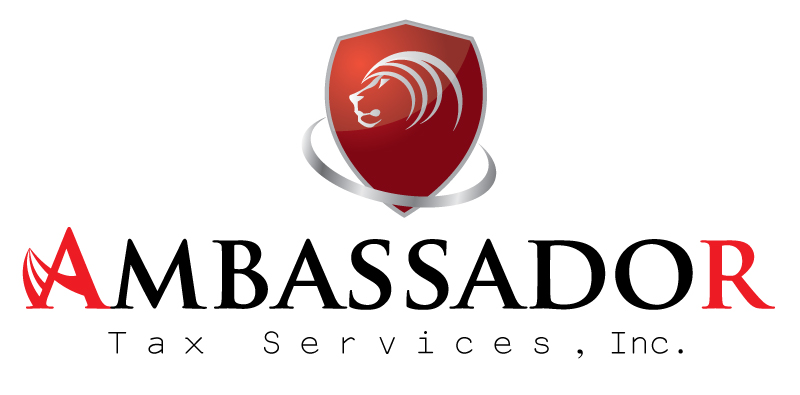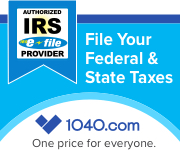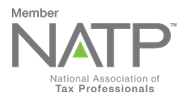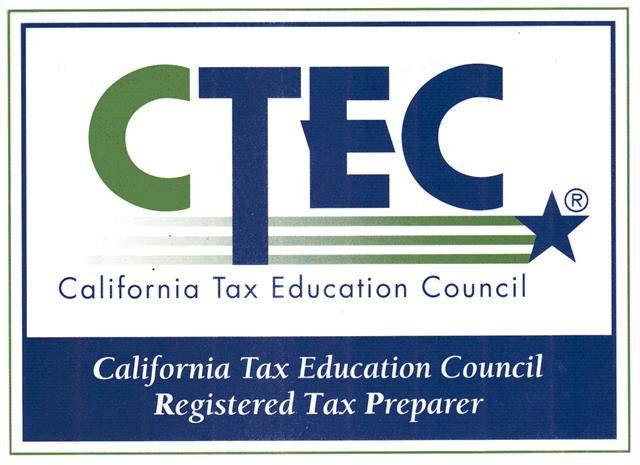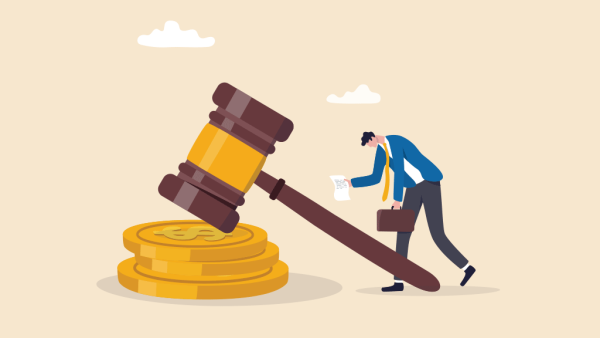
by Taxing Subjects | Jan 5, 2024 | Tax Tips and News
The IRS has announced new penalty relief totaling around $1 billion to approximately 4.7 million individuals, businesses, and tax-exempt organizations.
This relief is aimed at those who did not receive automated collection reminder notices during the pandemic, which were temporarily suspended in February 2022 due to the COVID-19 crisis. The IRS will issue a special reminder letter in February 2024 to inform taxpayers of their liability, along with easy payment options and details on any applicable penalty relief.
The penalty relief was put into place to address concerns that taxpayers who hadn’t heard from the IRS in a while might face larger tax bills when collection notices resume. Automatic for eligible taxpayers, the relief covers those with assessed tax under $100,000 for tax years 2020 and 2021. The IRS estimates that 5 million tax returns, filed by everyone from individuals to businesses and tax-exempt organizations, are eligible—with an estimated $206 per return in savings.
The penalty relief only applies to eligible taxpayers who were in the IRS collection notice process or received an initial balance due notice between Feb. 5, 2022, and Dec. 7, 2023. Taxpayers eligible for relief will still fall under the failure-to-pay penalty, though, which will resume on April 1, 2024. The relief also extends to taxpayers who have already paid their full balance; the IRS will issue refunds or credit payments toward other outstanding tax liabilities.
In terms of prioritization, the IRS has adjusted eligible individual accounts first. Business accounts are being adjusted into early January, with trusts, estates, and tax-exempt organizations to follow in late February to early March 2024.
The IRS will go back to the typical cycles of sending automated collection notices and letters starting in January 2024. These notices are specifically aimed toward individuals with tax debts prior to tax year 2022—and prior to 2023 for businesses, tax-exempt organizations, trusts, and estates with tax debts. This marks the end of the pandemic-related pause in collection notices, affecting only follow-up reminders.
Taxpayers not eligible for automatic relief can still explore existing penalty relief procedures. For example, taxpayers can look into the reasonable cause criteria or the First-Time Abate program. The IRS urges taxpayers to visit their website at IRS.gov for details.
Taxpayers receiving notices are advised to carefully read them before contacting the IRS, and resources are available on IRS.gov to help with tax debt, providing easy options to manage unpaid tax bills and avoid additional interest and penalties. The agency has also undergone transformational work, including improvements in the collection area, to enhance taxpayer support.
Additionally, the IRS has highlighted various payment options and online tools to assist taxpayers with unpaid tax debts. As part of ongoing efforts to improve services, the IRS has introduced self-help tools, including the IRS Document Upload Tool, improved phone service with callback features, and bots that can answer basic questions, set up or modify payment plans, and request transcripts. Taxpayers are encouraged to create an IRS Online Account for easy access to information about unpaid tax bills or to apply for an online payment plan.
Overall, the IRS’s actions represent a significant effort to ease the financial burden on taxpayers facing back taxes, particularly those impacted by the unique circumstances of the COVID-19 pandemic.
Source: IR-2023-244
– Article provided by Taxing Subjects.

by Taxing Subjects | Jan 4, 2024 | Tax Tips and News
The Internal Revenue Service updated and modified guidance surrounding an assortment of clean energy credits and other provisions over the closing days of 2023. Some of the changes will be in effect next tax season, while other alterations will not be realized for a year or more.
Here is a brief overview of what to expect on the clean energy front in the near future.
The Energy Efficient Home Improvement Credit Gets a PIN Number.
Most Americans are familiar with the Personal Identification Number, but this PIN stands for a Product Identification Number. It identifies qualifying equipment that is added to a homeowner’s clean energy system to improve its efficiency.
Starting for the 2023 tax year, the Energy Efficient Home Improvement Credit can refund up to 30% of the total amount paid by the taxpayer for qualified equipment. This can include qualified energy efficiency improvements installed during the tax year; certain property expenditures relating to energy systems for the year; and taxpayer-funded home energy audits for the tax year. Qualifying property must be put into service between Jan. 1, 2023, and Jan. 1, 2033.
The PIN requirement comes in 2025, when taxpayers who want to claim this credit will have to provide the Product Identification Number of any equipment installed to improve efficiency. The PIN will prove to the IRS that the equipment came from an approved manufacturer. Without the PIN on the return, the taxpayer will not qualify for the credit.
More details on the Energy Efficient Home Improvement Credit can be found in Notice 2024-13 on the IRS website.
The IRS is asking for public input on the credit and the proposed changes, but comments must be submitted by Feb. 27, 2024.
Guidance Issued on the Cost for the Commercial Clean Vehicle Credit.
The Treasury Department and the IRS have allowed owners of clean commercial vehicles to breathe a little easier with some new guidance on the Commercial Clean Vehicle Credit.
Relief comes in the form of a safe harbor for certain commercial clean vehicles that are put into service during TY 2024. The new guidance allows taxpayers claiming the credit to rely on Department of Energy (DOE) figures for incremental costs for such a vehicle. The DOE’s research shows the incremental cost of all street electric vehicles with a gross vehicle weight rating of less than 14,000 pounds – other than compact car plug-in hybrid electric vehicles known as PHEVs – will be greater than $7,500 during the 2024 tax year. For those electric vehicles that have a weight rating of less than 14,000 pounds, the safe harbor means the low incremental cost will not limit the available credit amount, as long as the vehicle goes into service during this calendar year. If a PHEV goes into service during the 2024 tax year and has a calculated incremental cost of less than $7,500, the IRS instead will accept a taxpayer’s use of the incremental cost from the DOE.
Additional information on this, as well as other classes of electric vehicles, is contained in Notice 2024-05 on the IRS website.
Frequently Asked Questions – Answered.
The IRS has also updated its guidance on the required critical mineral and battery components
contained in the New, Previously Owned, and Qualified Commercial Clean Vehicle Credits.
Originally, updates to the frequently asked questions on the credits were published in Fact Sheet 2023-22; the newest updates, however, take the place of the originals and are outlined in Fact Sheet 2023-29.
Giving Clean Hydrogen Some Credit.
Electric vehicles may be grabbing a lot of the headlines recently, but hydrogen is still on the list of possible clean fuels for the future. Looking ahead, the Internal Revenue Service has come up with proposed regulations for a tax credit on clean hydrogen production.
In broad terms, hydrogen can qualify as “clean hydrogen” when the gas is produced in the U.S. or a U.S. territory, and the production process meets a strict level of low emissions.
A production credit was put into place in the Inflation Reduction Act of 2022 (IRA). Under present terms, each kilogram of clean hydrogen produced at a qualified clean hydrogen production plant qualifies for a credit. The size of the credit depends on the level of emissions at the hydrogen production facility and whether the taxpayer complied with prevailing wage and apprenticeship requirements during the production plant’s construction, alteration, and repair.
The proposed regulations contain the basic building blocks to administer the credit and how to claim it. Among other things, they include language for figuring the lifecycle greenhouse gas emissions rate of the hydrogen production process, and how to verify the production or sale of hydrogen.
Sources: Treasury, IRS request public comments on product identification number requirement to claim the Energy Efficient Home Improvement Credit;
IRS issues guidance on the incremental cost for the Commercial Clean Vehicle Credit;
IRS updates frequently asked questions for the New, Previously-Owned and Qualified Commercial Clean Vehicle Credit;
Treasury, IRS issue guidance on the tax credit for the production of clean hydrogen
– Article provided by Taxing Subjects.

